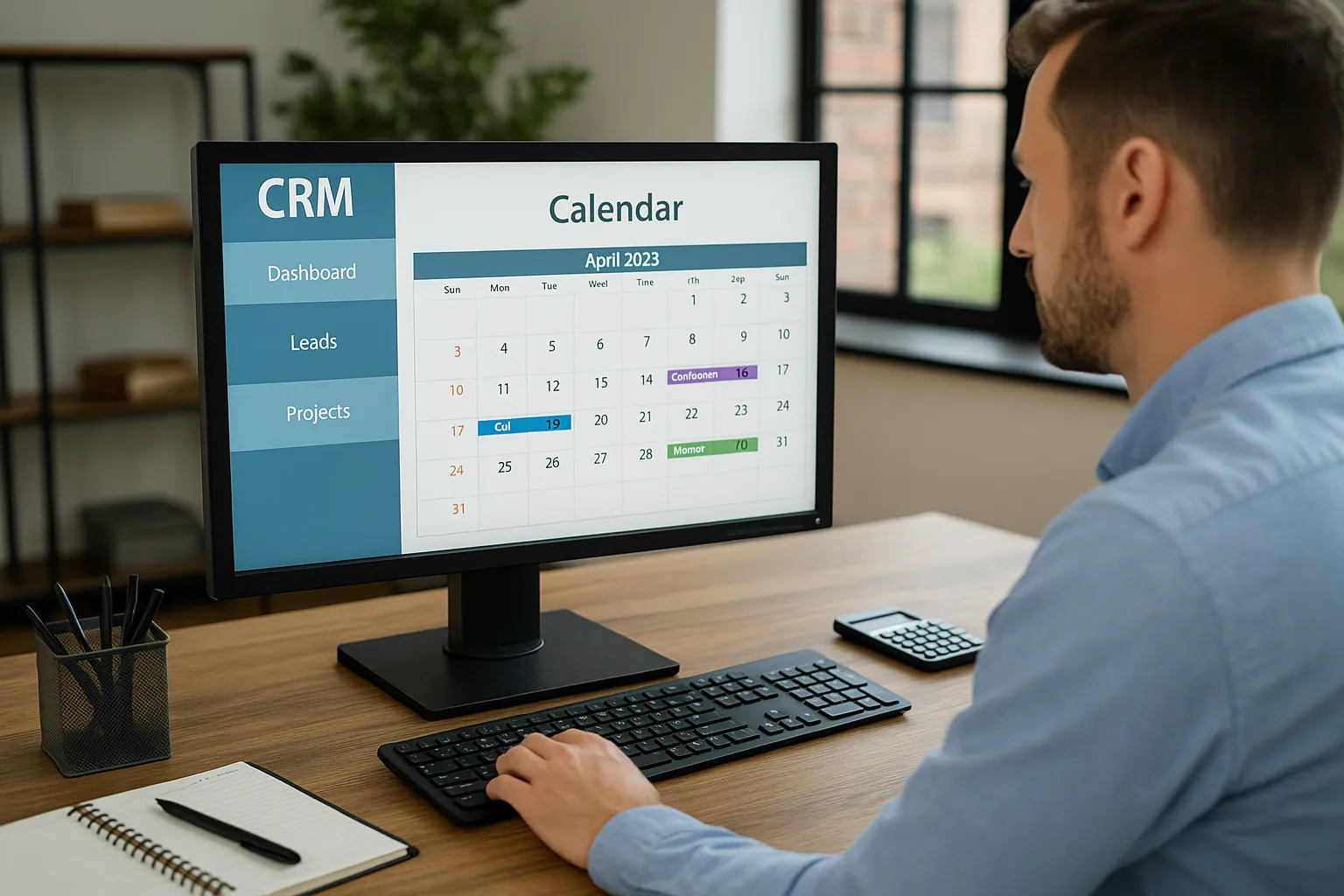Streamlining your schedule and client communications hinges on seamless calendar integration within your CRM. Rather than juggling multiple apps—one for your customer data, another for meetings—an integrated calendar centralizes every appointment, reminder, and deadline directly alongside client records. In this guide, I’ll share my hands-on experience implementing calendar features in various CRMs, discuss practical considerations, and walk you through the step-by-step process to bring scheduling functionality directly into your customer relationship workflows.
Why Calendar Integration Matters
Before diving into how, let’s explore why embedding a calendar into your CRM isn’t just convenient but transformative for team productivity.
Eliminating App Switching
Switching between your CRM, a standalone calendar, and an email client eats into productivity. Every time you toggle apps, you risk missing context—did that meeting relate to the Opportunity in your CRM or the support ticket? With integrated calendars, every event, invite, and update lives within the CRM record, reducing mental overhead and saving precious minutes each day.
Improving Client Communication
When a meeting is scheduled inside the CRM, client records automatically log the event. You no longer need to manually copy meeting details into the contact’s timeline. Follow-up tasks—like sending a recap email—can be automated, ensuring no lead or client falls through the cracks.
Enhancing Team Coordination
For teams working across time zones or offices, real-time calendar sync guarantees everyone sees the latest appointment changes. Integrated calendars enable group scheduling, resource booking, and availability sharing without the risk of double-booked sales reps or project managers.
Choosing the Right CRM with Calendar Features
Not every CRM offers the same depth of scheduling tools. At its simplest, calendar integration might mean a visual calendar view; at its most advanced, it includes client self-booking portals, automatic reminders, and buffer-time rules. To understand what’s possible, explore robust project management crm systems that offer top-tier scheduling. For a powerful example of specialized scheduling features—like round-robin assignment, time-zone detection, and custom reminder triggers.
Native vs. Third-Party Integration
Some CRMs, such as HubSpot and Zoho CRM, offer built-in calendar modules that auto-sync with Outlook or Google Calendar. Others rely on third-party integrations—Zapier, Calendly, or Microsoft Power Automate—to bridge the gap. Native modules typically offer tighter UI cohesion, while third-party tools can deliver more advanced scheduling logic without waiting for CRM developers to add features.
Key Integration Capabilities
When evaluating CRMs, look for the following scheduling capabilities:
Two-way sync with popular calendar services
Meeting link generation and client self-booking
Automated email or SMS reminders
Group scheduling and resource allocation
Buffer times, blackout periods, and time-zone awareness
Step-by-Step: Integrating Google Calendar into Your CRM
Below is a general roadmap for connecting a Google Calendar to a typical CRM platform. Exact steps vary by vendor, but these principles apply broadly.
Confirm Calendar and CRM Compatibility
First, ensure your CRM supports the calendar service of your choice. Check the CRM’s marketplace or documentation for available integrations. If native support exists, the CRM will list Google or Microsoft sync under “Integrations” or “Settings.”
Authenticate Your Calendar Account
Navigate to your CRM’s integration settings and select “Connect Calendar.” You’ll be prompted to log in to your Google (or Microsoft) account. Grant the requested permissions, allowing the CRM to read and write events. For multi-user setups, repeat this for each team member, ensuring individual calendars sync to their respective CRM accounts.
Configure Sync Settings
Within the CRM’s scheduling settings, choose which calendar you want to sync (work, personal, or shared team calendar). Decide on sync direction: one-way (CRM to calendar) or two-way (CRM mirrors calendar updates, and vice versa). Two-way sync prevents double-booking by pulling existing events into the CRM’s availability checker.
Customize Meeting Types
A robust CRM lets you define multiple “meeting types”—consultations, demos, check-ins—each with its own duration, buffer times, and participant rules. Set these parameters in the CRM’s scheduling section so clients booking via link see only the options you want to offer.
Embed Booking Pages
To automate client self-scheduling, embed the CRM’s booking link on your website or email signature. Prospects click, choose a meeting type, and view your real-time availability. Once booked, the CRM auto-creates the event in both your calendar and the client’s invite list, plus logs it under the appropriate contact record.
Automate Follow-Ups
Finally, leverage your CRM’s workflow builder to trigger follow-up actions post-meeting. For example: once a meeting concludes, automatically create a task titled “Send meeting notes,” or enqueue a nurturing email if no deal exists. This closes the loop, turning a single appointment into a replicable process.
Real-World Examples of Calendar-CRM Sync
Understanding abstract steps is one thing; seeing them in action brings clarity. Below are examples from my own implementations.
Consulting Firm Streamlines Onboarding
A mid-size consulting firm used Salesforce but struggled with disparate calendars among partners. By enabling Salesforce’s Einstein Scheduler, they unified all consultant calendars, allowed clients to self-book introductory calls, and slashed onboarding times by 30%. Follow-up tasks now auto-create in Salesforce, ensuring no proposal or contract step is missed.
Freelance Marketing Specialist Boosts Efficiency
As a solo marketer, I relied on Pipedrive with a Calendly integration. Pipedrive auto-logged every booked call, while Calendly’s round-robin feature distributed client meetings evenly across my team of contractors. Integrations via Zapier pushed Calendly events into Pipedrive as activities, giving me a single pane of glass for all upcoming tasks.
Advanced Considerations
Calendar integration goes beyond basic event sync. As your organization matures, consider these enhancements:
Resource Booking and Room Allocation
Project teams often need to reserve conference rooms or equipment. CRMs with resource-booking modules—sometimes branded under field service or operations—let you block resources as part of the event creation process.
Time-Zone and Localization Automation
Global teams benefit from meeting invites that automatically adjust to each participant’s local time. Some CRMs detect the client’s time zone based on their IP or calendar settings, preventing confusion during cross-border scheduling.
Embedding Calendars in Custom Dashboards
For executive overviews, embed calendar widgets within CRM dashboards. Leaders can then see team meeting load, upcoming client reviews, and project kickoff dates at a glance—no additional clicks required.
Troubleshooting Common Issues
Even well-designed integrations face hiccups. Here’s how to address them:
Sync Delays and Conflicts
If events aren’t appearing immediately, verify your CRM’s sync interval (often configurable between instant and every 15 minutes). For conflicts—such as duplicate events or missing updates—check permission scopes granted during authentication and reauthorize if necessary.
Permissions and Privacy Settings
Users may inadvertently deny CRM access to sensitive calendars. Encourage team members to review Google or Microsoft account security settings, ensuring the CRM application retains “read and write” privileges indefinitely.
Integration Breaks After Password Changes
If a user changes their calendar account password, the OAuth token may expire. Proactively set notifications for token expiration or build a quarterly check-in process to reauthorize accounts before meetings are impacted.
Final Thoughts
Integrating a calendar into your CRM is more than a convenience; it’s a catalyst for operational excellence. By centralizing scheduling, automating follow-ups, and unifying communication, you minimize friction between client touchpoints and internal workflows. Whether you’re a solo professional exploring project management crm features or a growing team embedding advanced scheduling from providers like Corcava, the benefits of a harmonized calendar are immediate and lasting.





